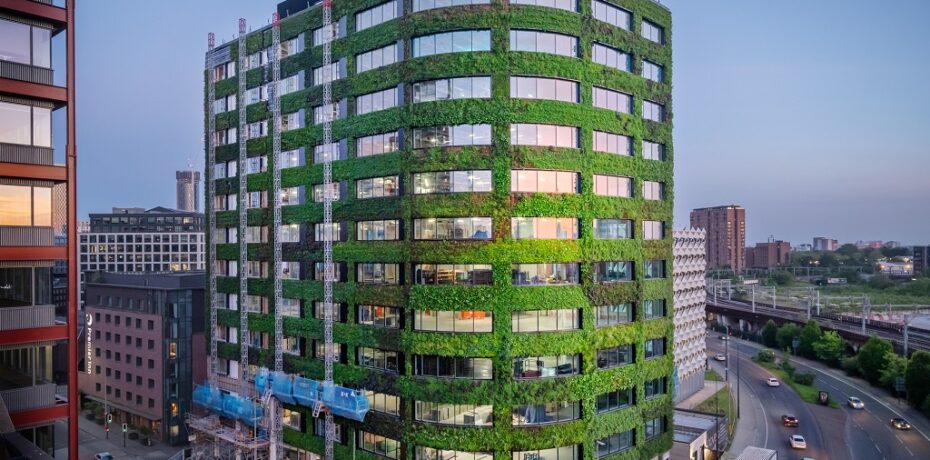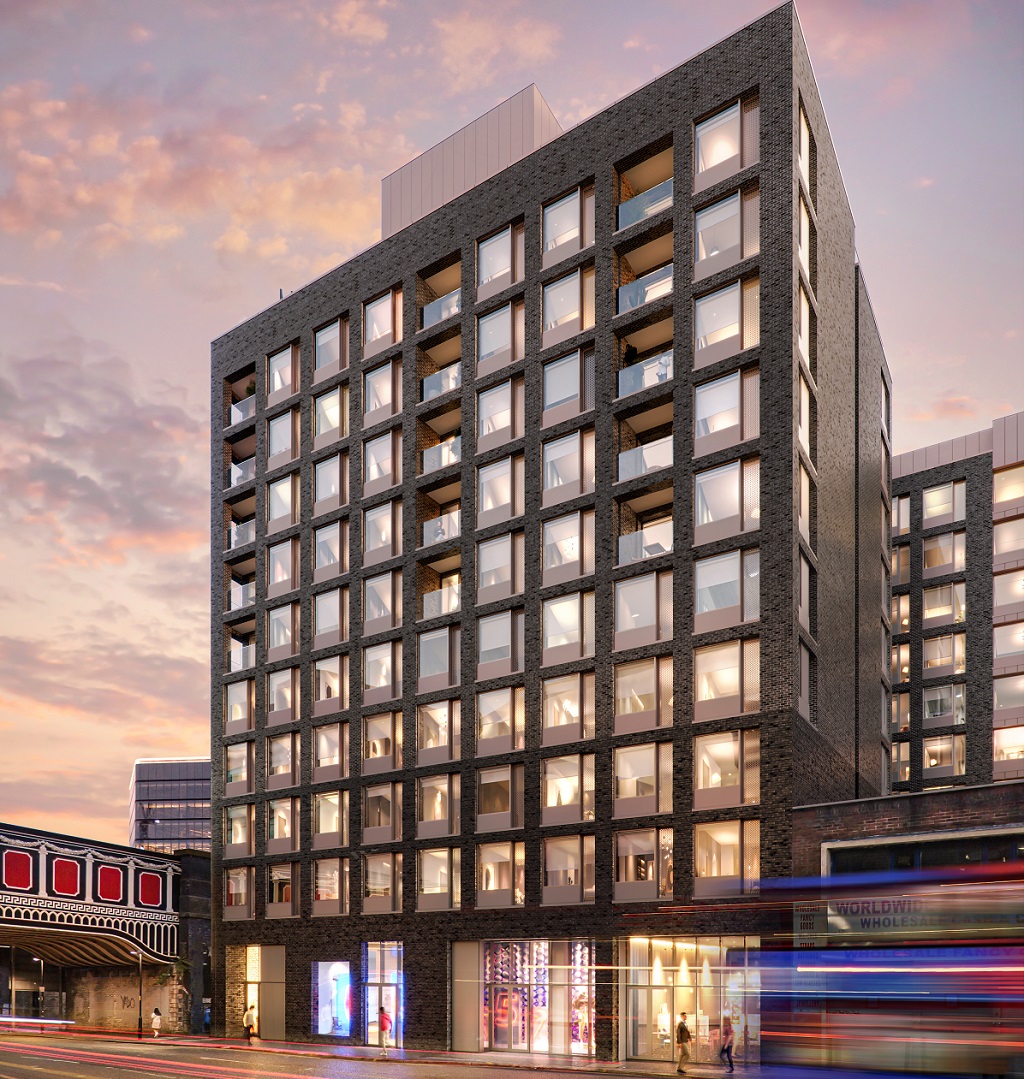The Subplot
The Subplot | Got them by the NABERS, flex floorspace, Airport City
Welcome to The Subplot, your regular slice of commentary on the business and property market from across the North of England and North Wales.
THIS WEEK
- Compliance is everything in the new post-pandemic office market, as occupiers know
- Elevator pitch: your weekly rundown of who is going up, and who is heading the other way
GOT THEM BY THE NABERS
Occupiers: The office market has your full attention
Hold them firmly by their eco-accreditations. Minds and money will surely follow.
To Subplot’s mind, NABERS sounds like the kind of word that ought to feature in vulgar sayings (‘It’s the dog’s nabers!’). Disappointingly, it’s an energy rating for buildings that measures actual usage plus how prepped a building is for efficiency (as opposed to BREEAM, which just does design). It has six star ratings, three is average and six outstanding. So far nobody has scored over 5.5, which is where English Cities Fund’s 115,000 sq ft Eden office block in Salford landed. Eden is one of just two UK examples of such a high rating for a new-build, and hopes to get another high rating when the building is in operation. Bruntwood Works is aiming for something similar in Didsbury, as is HBD at the Island site in central Manchester.
Is everything WELL?
Over in Liverpool, the 206,300 sq ft Spine office building has won a WELL Platinum rating, the third largest building in the UK to be WELL Platinum, which is an achievement for a rating that depends on air quality, light, comfort, and sound. The whole wellness thing has a sensible, measurable, hard core wrapped in a thick blanket of woo, but for now it’s a concept everyone is pleased to talk about. So well done The Spine.
Heavy lifting
The North’s developers and agents are watching closely. They think this points toward an office market with a lot more rebuilding and heavy-duty refurbishment (and a lot less light-touch refurb or lick-of-painting). “The flight-to-quality theory is becoming a reality. In the next 12-18 months I think we’ll see more people looking to relocate rather than reinvent existing floorspace,” HBD director Lee Treanor tells Subplot.
“That’s because they are looking for additional amenity, but also because the next lease cycle – the next 10 years – takes us through 2030/2035 and occupiers want to be in the right space by then ready to report their own carbon targets.”
Swings and roundabouts
All of this costs money. Fortunately, the widely shared view is that occupiers can afford it. Received market wisdom says that requirements for floorspace are about 30% smaller than they were pre-pandemic (on average). In theory that allows for up to a 30% increase in occupational costs. Something like this seems to be happening.
Compliance is everything
Smart insiders say the keyword is not so much “sustainable” as “compliant” – meaning it fits the latest building codes and opt-in standards like NABERS and WELL. Only a handful of Manchester city centre buildings match-up – one of them being the 100,000 sq ft Island site in John Dalton Street, where HBD is targeting 5.5 NABERS. The pressure to win accreditation (compliance) makes the refurbishment versus new-build calculation a lot more testing (or nuanced, take your pick).
“Landlords know refurbishment isn’t about sticking plasters – it’s not new carpets and some decoration – it’s a proper job, internal works, improved external fabric, improved amenity often by foregoing some income on the ground floor for lounges or event spaces. Nobody wants a stranded asset. Retrofit is a huge challenge but also brings with it huge opportunities,” says Treanor.
Gotcha
For landlords with non-compliant buildings, the maths is a problem. “It’s a massive challenge to know how to reposition those assets to meet occupiers’ needs,” says one senior agent. Even for developers with a clear view of how to proceed, a market operating on the basis of higher costs and external standards poses greater risks. After all, nobody likes to be squeezed too much in the wrong place.
 ELEVATOR PITCH
ELEVATOR PITCH
Going up, or going down? This week’s movers
There could still be a lot of growth in the flexible workspace sector, but there isn’t much sign of take-off at Manchester’s Airport City office development. Doors closing, going up!
 Flexible workspace
Flexible workspace
IWG’s Spaces brand of flexible workspace will open next month at Sheffield’s Pennine Five campus. The 34,000 sq ft hub has enjoyed a £4.3m fit-out. This was a big deal, and a Big Deal, for Sheffield, but could it be the first of many more big deals in a flex sector that still has a lot of growing to do?
Last year, the Instant Group calculated that if just 5% of existing office demand was diverted from traditional leases to flex floorspace, there would need to be 9% more flexible floorspace in Leeds, translating to around 375,000 sq ft. If the transfer from leasehold to flex grows to 20% then it will need 1.9m sq ft of additional flex floorspace. We don’t have the figures for Sheffield, but the Liverpool office market is (in some ways) roughly comparable and the relevant numbers are, respectively, 165,000 sq ft and 1.1m sq ft – which is lots.
 Airport City
Airport City
So what happens now at Airport City? The 4m sq ft office-led redevelopment of a megaplot next to Manchester Airport was meant to be anchored by a 1m sq ft HQ campus occupied by online beauty giant THG. Subplot has been following the non-development of this as-yet non-scheme for what feels like ever (see October 2022 for a rundown). Earlier this year the £67.5m loan that would have kick-started it dropped off the map.
Now the site next door, with its 1m sq ft of mostly warehousing, is being off-loaded by a business controlled by THG chief executive Matthew Moulding for something like £250m. This is not a related development, but might fairly be seen as a significant straw in the wind. THG still languishes well below its flotation price and shareholder appetite for capital expenditure remains strictly limited.
Columbia Threadneedle took effective control of Airport City following a £400m shareholder buy-out in summer 2020. Observers have had difficulty discerning active marketing or a strategy to develop the office element of a prime 150-acre enterprise zone asset, aside from the THG plan. So Subplot put in a call to the owners. As Subplot shipped there was no answer. We’ll keep you posted.
Get in touch with David Thame: david.thame@placenorth.co.uk




